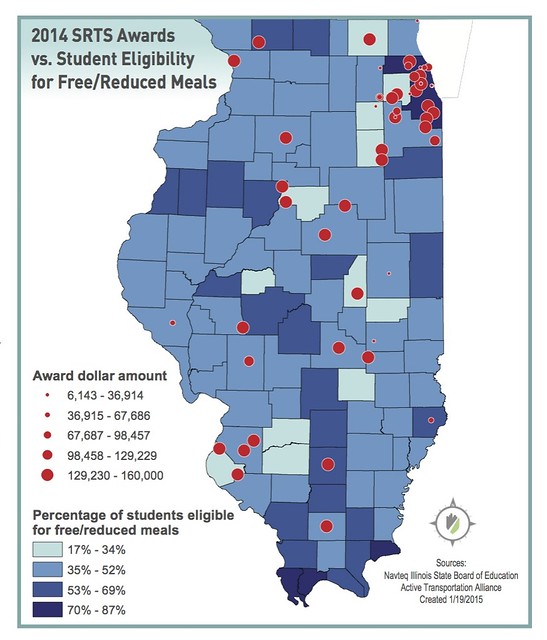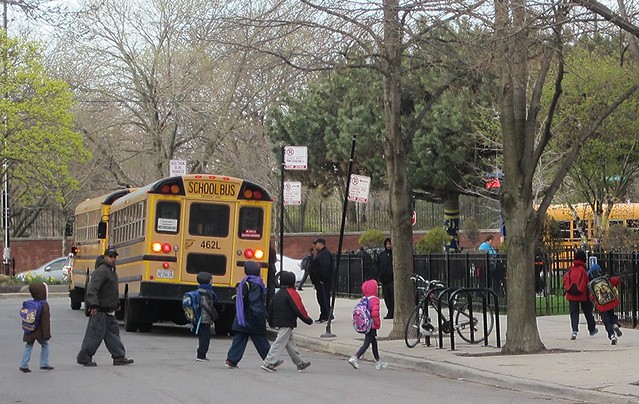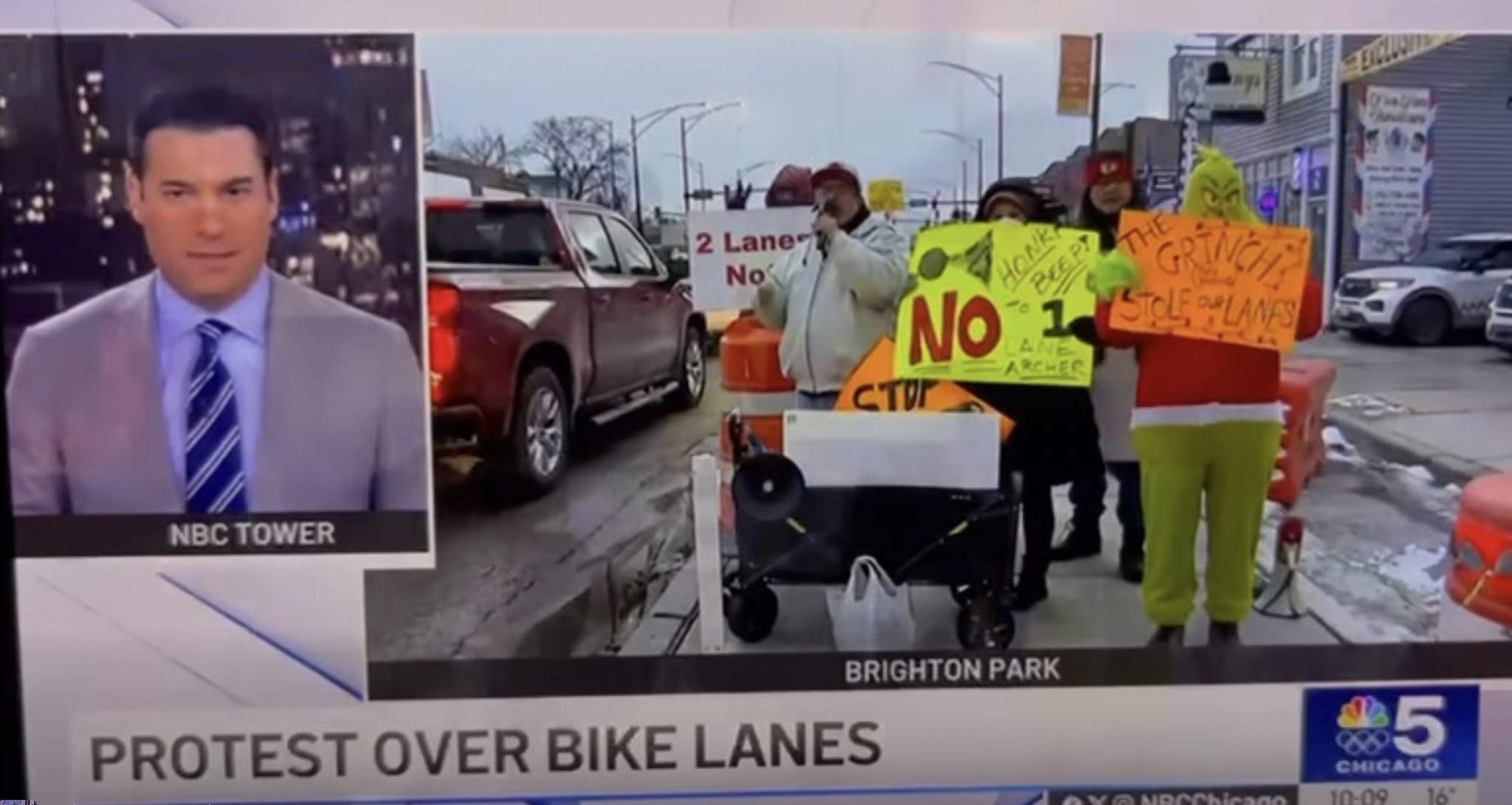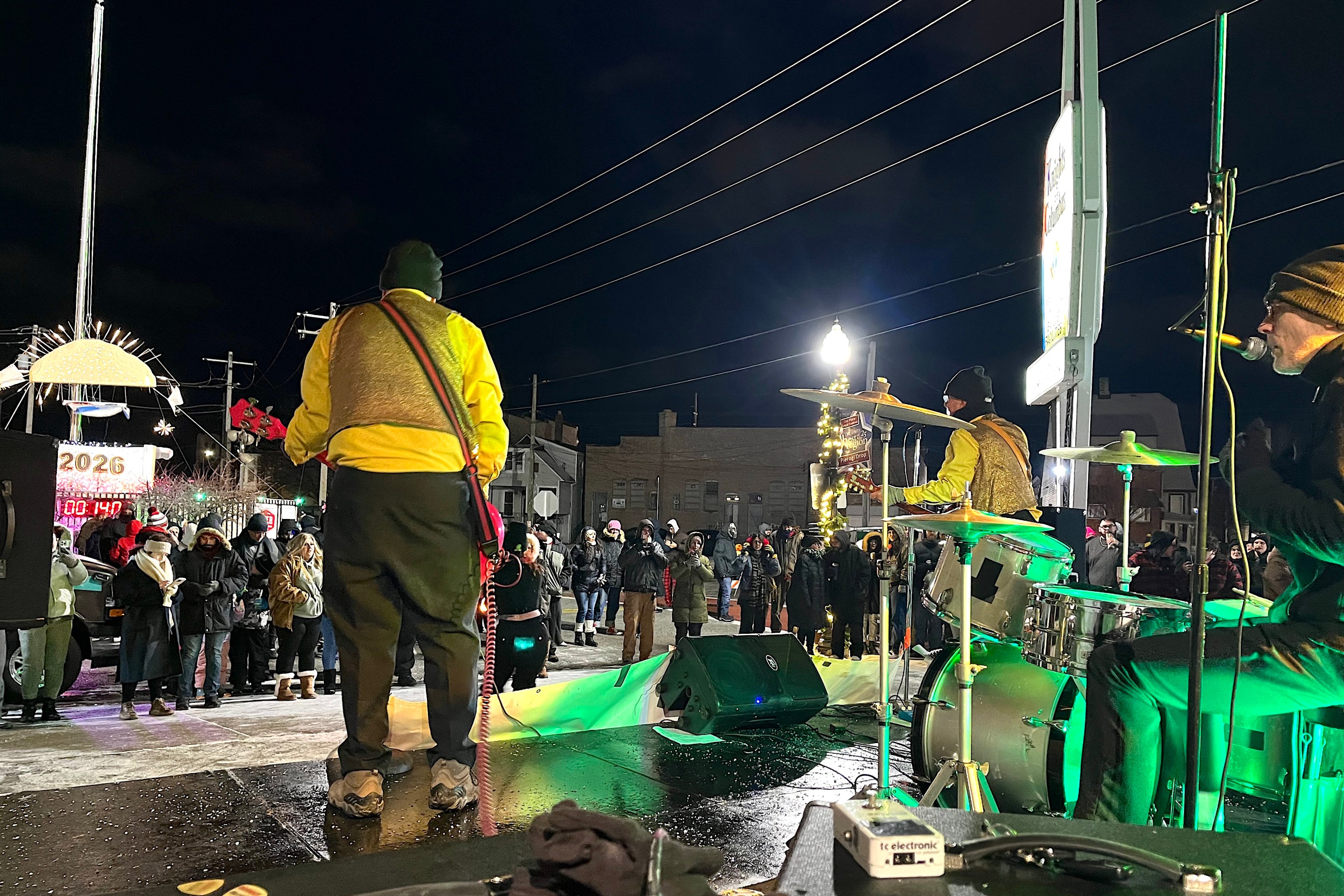In the wake of new analysis that shows nearly five children are struck by drivers within a block of an Illinois school every day, the Active Transportation Alliance is spearheading a campaign to overhaul the state’s Safe Routes to School program. “We’re really hoping to highlight the program, and also emphasize the need to improve it and put more funding behind it,” said campaign manager Erin McMillan.
Between 2006 and 2012, almost 19,000 children were struck while walking or biking in Illinois. The Active Trans study found that 54 percent of these crashes took place within a block of a school, with a child being hit every five hours on average.
McMillan added that the rate of walking and biking to school has dropped sharply over the last few decades. In 1969, half of school children walked or biked to school, but only 13 percent reported doing so in 2009. Meanwhile, the national childhood obesity rate has tripled over the last three decades, and about one in three Illinois children is overweight or obese. Childhood obesity is particularly prevalent among African-American and Latino children.
In recent years, Safe Routes to School has emerged as a national movement to improve the safety and health of children by promoting walking and biking via educational programming and infrastructure improvements such as sidewalks, crosswalks, and bike lanes. Since 2005, Illinois’ SRTS program has awarded nearly $49.5 million to 518 projects. However, unlike some other states that provide significant state funding for Safe Routes, Illinois only distributes federal transportation dollars.

Active Trans argues that our state’s SRTS program is falling behind its peers due to reduced federal funding and administrative issues, and that the program is not reaching many of the low-income communities that need safety education and infrastructure the most. While these communities generally have higher crash rates, the Active Trans study found that they were significantly less likely to receive grants in the last round of Illinois SRTS funding.
To address these issues, yesterday Active Trans and a coalition of other transportation and health-oriented organizations and businesses launched the Illinois Safe Routes to School Campaign, hoping to pass state legislature to increase funding and reduce administrative hurdles for applying for the grants. The coalition also includes AAA, Alta Planning + Design, American Diabetes Association, American Heart Association, Consortium to Lower Obesity in Chicago’s Children, FORWARD, League of Illinois Bicyclists, Illinois Alliance to Prevent Obesity, and the Illinois State Alliance of YMCAs.
The coalition is calling for codifying SRTS into Illinois law, increasing the state’s financial contribution to the program, and requiring a full-time coordinator. They want the state to increase outreach to educate more communities about the benefits of the program, provide more technical assistance with the application process, and make sure that low-income communities don’t miss out on grants due to inability to provide local funding for approved projects. They also want to see the application and review process streamlined.
McMillan acknowledged that it is going to be an uphill battle to win more state funding for SRTS, since Governor Bruce Rauner has already announced his intentions to slash social programs. “It’s certainly a difficult financial climate right now.”
But she hopes that by highlighting the benefits of better safety education and infrastructure for reducing crashes and improving health, the coalition can win over state lawmakers. For example, a New York City study found a 44 percent decrease in child pedestrian injuries in areas with SRTS improvements. Schools participating in Safe Routes report 60 percent higher rates of walking and biking than schools that don’t.
Safe Routes also has economic benefits. A study found that for every million dollars spent on pedestrian and bike infrastructure projects, 9.6 to 11.4 new jobs are created, compared to only 7.8 for road projects.
The experience of the south-suburban village of Monee is an example of how SRTS funding can make a big difference in improving outcomes for kids. In 2008, after a new subdivision was built near the local elementary school, kids were walking to the school in a ditch or in the street because there was no sidewalk. The children were endangered, and busing them less than a mile was cost-prohibitive.
Community liaison Heidi Gonzalez applied for a Safe Routes grant to build a sidewalk to connect the development with the school. It was built within the same school year that the funding was awarded. “Kids now have the opportunity to walk or bike to school, as opposed to walking along a hazardous route or being bused a very short distance,” Gonzalez said.
To endorse the coalition's campaign, you can sign an Active Trans petition and email your State Representative to encourage them to support additional funding for the program.





